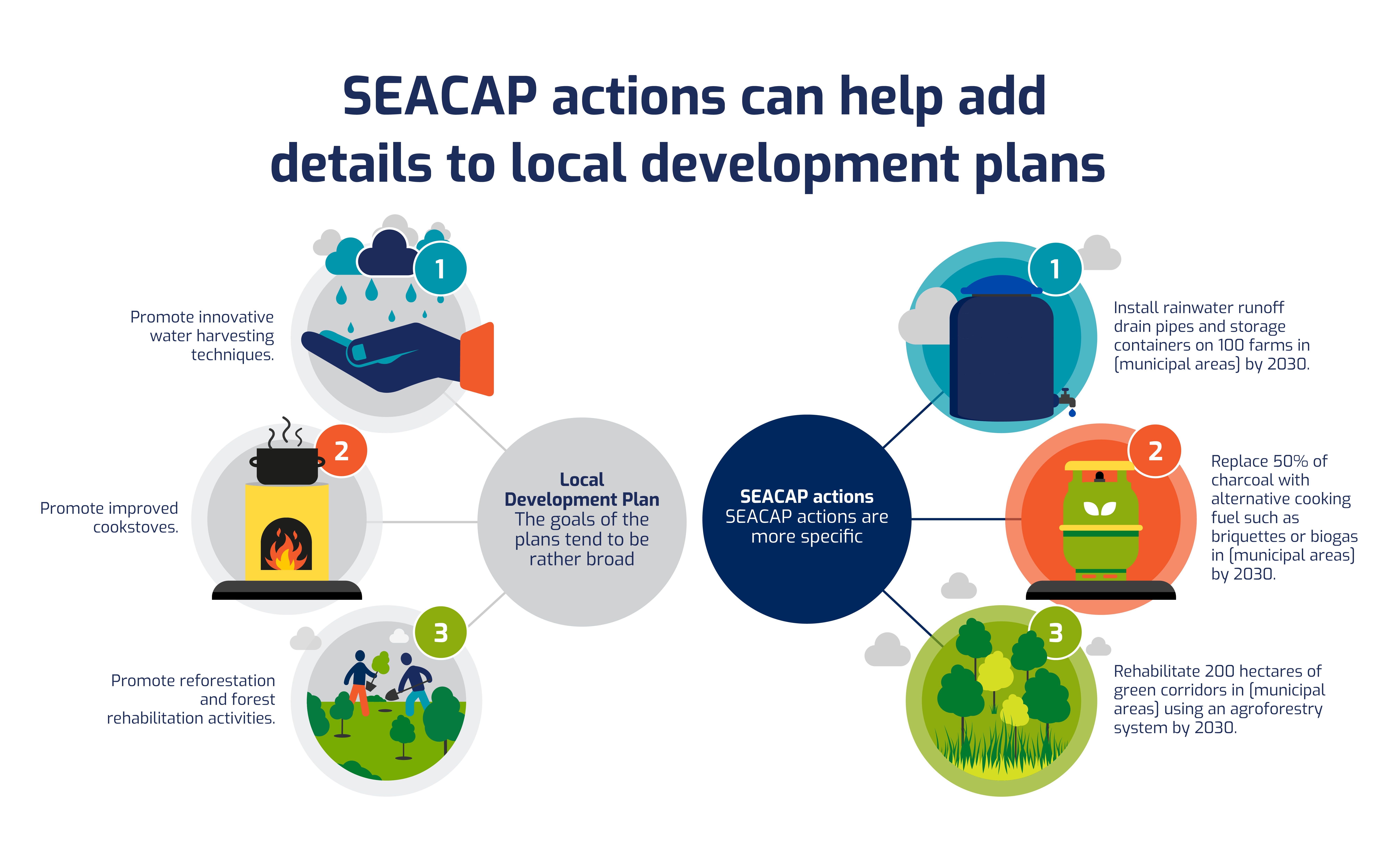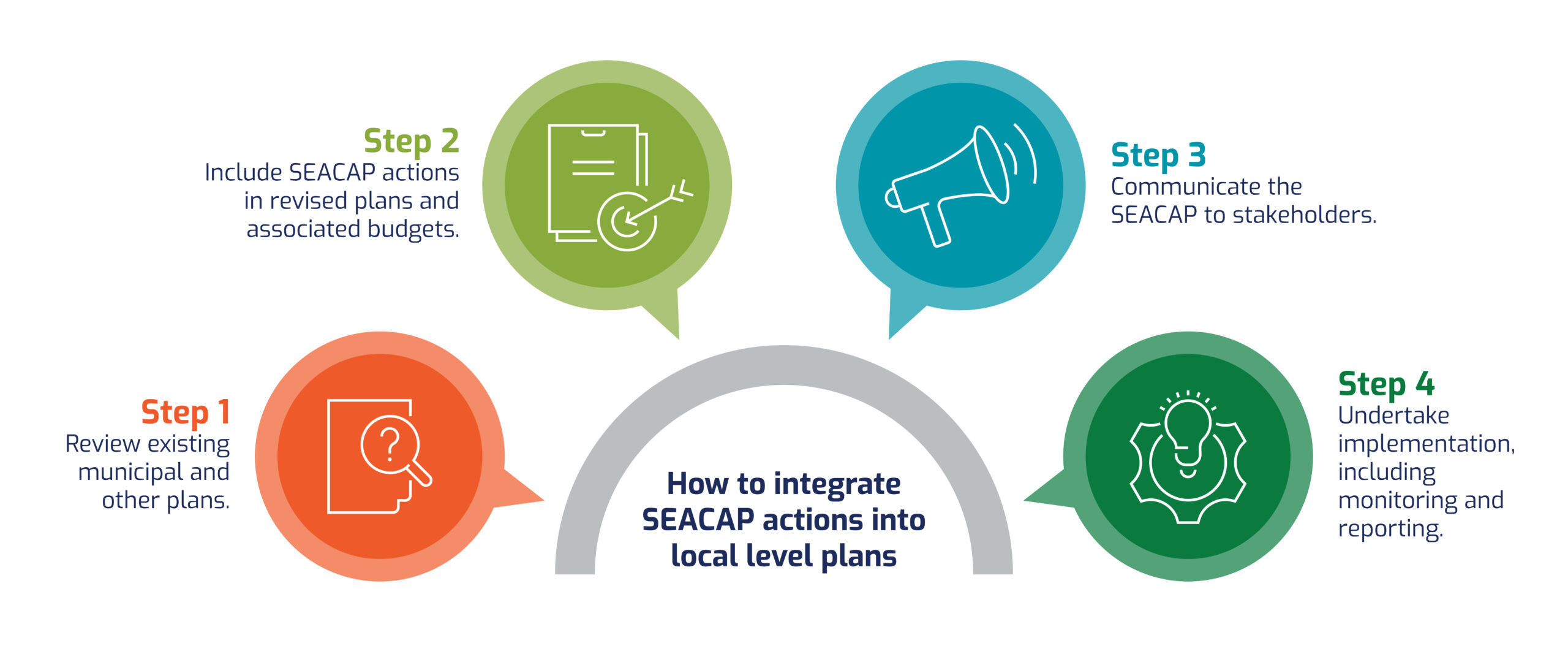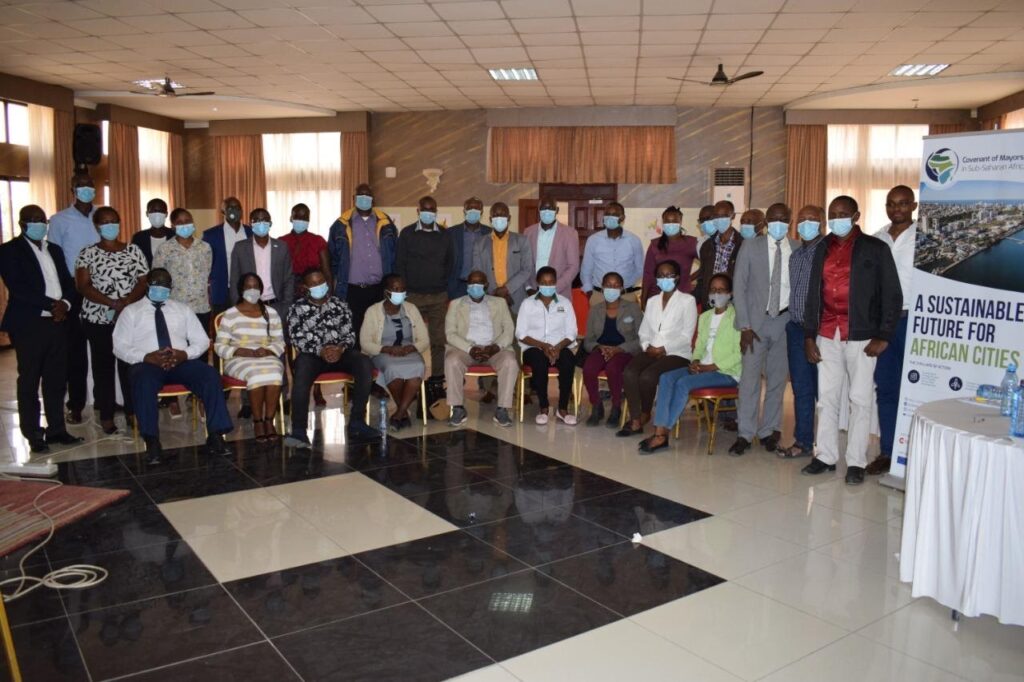Leçon 8.1 : Intégration de votre PAAEDC aux plans de niveau local existants
During the action planning phase of SEACAP development, it is important to align action to existing policies, plans and strategies.
Example: Nakuru County, Kenya Example: Nakuru County, KenyaStakeholders developed adaptation actions for the agriculture, livestock and fisheries, forestry and tourism sectors. To inform this, they referred to existing actions related to these sectors in the National Climate Change Action Plan (NCCAP, 2018) and the Nakuru County Climate Change Action Plan (NCCCAP, 2018). This ensured the actions stakeholders developed to achieve SEACAP targets are also aligned with existing targets and actions in other important planning documents.
TIP BOX TIP BOXWhen organising a participatory workshop to set SEACAP actions, prepare a list of existing national and/or local level actions that are relevant to your local government to ensure alignment.
SEACAP actions also need to align with existing climate change actions in local planning documents, such as local development plans, to ensure:
- Consistency in the local governments plans
- SEACAP actions are implemented
- Climate change is considered in local planning
Integrating SEACAP actions into local level plans
For actions that are well-aligned with existing municipal plans, legislation and budgets, and fall under the municipality’s mandate (i.e. the municipality can implement these actions without external support), it makes sense to incorporate these into local level plans during planned review processes. This helps to ensure they are implemented and climate change is tackled through local plans.
The benefits are that:
- Existing plans may already have budget assigned. Municipalities may not need to seek additional funding for SEACAP actions if they are mainstreamed into existing plans.
- This method also facilitates buy-in and implementation at the local level.
Examples of local level plans to be considered for integrating SEACAP actions
- Integrated Development Plans
- Municipal Development Plans
- Spatial Development Frameworks
- Existing Climate Change Action Plans
- Sector-specific Plans
- Gender equality and social inclusion strategies
- Existing participatory plans and processes (engaging local stakeholders)
Adding details and climate change considerations to local development plans
SEACAP actions can also add details and climate change considerations to local development plans.
How do you integrate SEACAP actions into local level plans?
There are four steps in the process of integrating SEACAP actions into local level plans: These steps are explained in the sections that follow.
These steps are explained in the sections that follow.
Review existing municipal and other plans.
- Existing local plans should be reviewed to check whether they already include relevant climate change actions and where they can be improved, as well as relevant gender sensitivity and sensitivity to marginalised communities.
- Plans that were already used during SEACAP development to inform actions (e.g. existing climate change action plans) should be updated with all the new information gathered for each action.
- Example: ‘Promote improved cookstoves’ becomes… ‘Replace 50% of charcoal with alternative cook fuel such as briquettes or biogas in [municipal areas ] by 2030’
- Other development plans can be reviewed to check whether any SEACAP actions could be included as part of the municipality’s service delivery.
- You can also apply the SEACAP stakeholder analysis and sensitivity to women and other marginalised groups to other plans.
- Work with representatives of the relevant sector departments to do this.
For further guidance on this process, please consider the Let’s Respond Toolkit developed by the South African Government in partnership with GIZ and the South African Local Government Association (SALGA).
This can be used as a guide for context-specific planning as it is specific to the South African context.
Include SEACAP actions in revised plans and associated budgets.
Ask the following questions:
- Is this SEACAP action aligned with any of the actions included in this development plan?
- Would this SEACAP action improve the municipality’s plan in responding to climate change?
- Can this SEACAP action be included in this plan, funded and implemented by the municipality?
- Does this SEACAP action consider the experiences of women and marginalised groups? </ol
- Determine when relevant local plans will next be reviewed and revised.
- Incorporate SEACAP actions into the plans where possible.
- Include detailed costs for each action in the relevant budgets to ensure available funds for implementation.
To ensure inclusion of SEACAP actions:
Note: This process will likely require consultation with the relevant municipal treasury.
Communicate the SEACAP to stakeholders.
- Communicate key components of the SEACAP to stakeholders as it is important to keep all relevant stakeholders informed to facilitate buy-in and implementation.
- Example: The municipality of Garoua organised a SEACAP launching event inviting all relevant regional and local planning institutions to ensure that the SEACAP actions became known and were integrated into ongoing planning processes for all relevant sectors.
- For this step, required monitoring and reporting for the implementation of local-level plans may differ from what is required in the SEACAP.
- Alignment of these processes where possible will be ideal – i.e., use the existing monitoring and reporting structures of your local government to directly inform the monitoring and reporting required by the SEACAP process.

